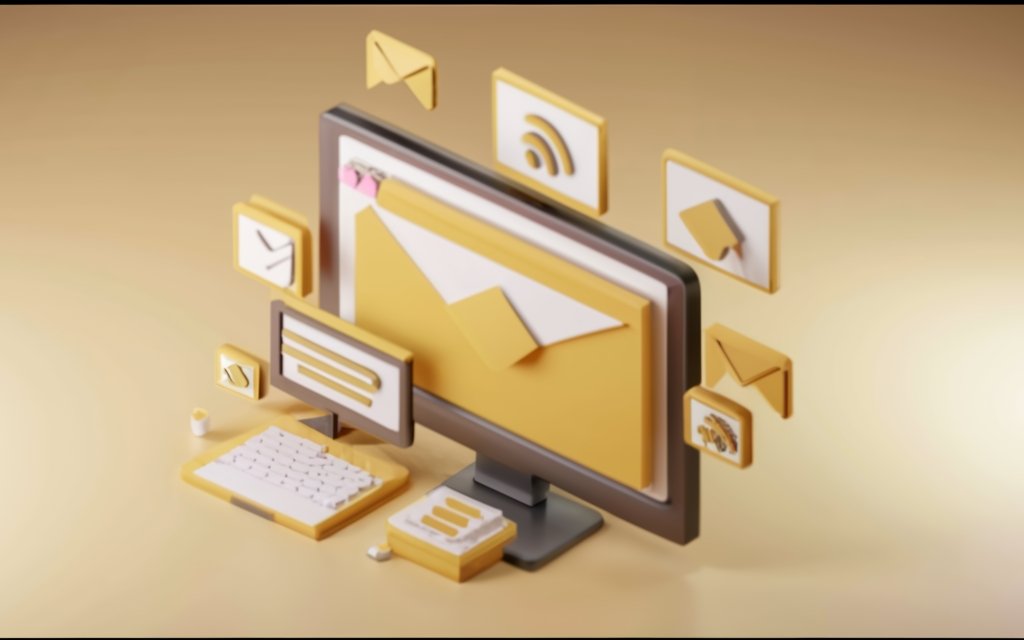Want to know how to edit subject line in gmail, but never done it before? Master the art of email communication by learning how to effectively change the subject line in Gmail.
Understanding the Importance of Subject Lines If You Want to Change Or Not
Subject line is the first element that catches the recipient’s eye, influencing their decision to open an email or bypass it. A well-crafted email subject line acts as a window into the content of the message, setting expectations and piquing interest. When you want to change the subject in Gmail, it’s often to ensure that the email thread remains relevant and the conversation’s purpose is clear.
Changing a subject line can be crucial in long email chains, where the original message may have deviated from the original subject. This is where the need to change your Gmail subject line becomes evident. In Gmail’s conversation view, each email thread with the subject line is displayed as part of one continuous conversation. When you easily change the subject, it can help to highlight a shift in discussion or mark a new conversation thread, ensuring that the email chain stays organized and focused.
Moreover, in professional settings, where clarity and precision are key, updating the subject line to reflect the current discussion can prevent important messages from being overlooked or lost in a long email chain. Whether you’re using Gmail on a browser or through its app on Android or iOS, understanding how to change a subject line is a valuable skill. It’s important to remember that when you create a new subject line, it essentially starts a new email conversation, separating it from the original email thread. This helps in maintaining a clear and organized Gmail inbox, making it easier to navigate and manage your day-to-day email interactions.
Methods to Edit Subject Line in Gmail Inbox
Change the subject line before sending an email
To edit the subject line while composing an email in Gmail, follow these steps:
- Open Gmail in your web browser or app.
- Click on the “Compose” button to open the compose window.
- As you draft your email message, you may want to change the subject line. To do this, click on the subject line at the top of the compose window.
- Edit the subject line as needed. This could be to make it more relevant or clear.
- Once you’re satisfied with the updated subject line, continue composing your email and send it as usual.
Limitations/Considerations:
- This method only works before sending the email. Once sent, the subject line cannot be changed using this method.
- The original subject line should be carefully considered to ensure it accurately reflects the content of the email.
Editing the subject line of a received email thread
To edit the subject line of an already received email in Gmail:
- Open the email thread with the subject line you wish to change.
- Click on the “Reply” or “Reply All” button.
- In the compose window that appears, click the drop-down icon next to the “To” field.
- You will see the original subject line. Click on it to make your edits.
- After editing, type your reply and send the email. This will create a thread with a new subject.
Restrictions/Conditions:
- This method starts a new email thread based on the subject line you’ve edited.
- The original email thread retains its original subject line and remains unchanged in your conversation history.
Using Gmail’s “Undo Send” reply feature for email in gmail
The “Undo Send” feature in Gmail can be an indirect way to edit a subject line:
- First, ensure “Undo Send” is enabled in your Gmail settings. Go to Settings (gear icon) > See all settings > General tab, and set the cancellation period (5, 10, 20, or 30 seconds).
- Compose your email and send it.
- If you immediately realize you need to change the subject line, click “Undo” at the bottom of the email window that appears.
- The email will reopen in the compose window. Click on the subject line to edit it.
- After editing, resend the email.
Instructions/Effectiveness:
- This method is only effective within the “Undo Send” time window you’ve set.
- It’s useful for quick corrections right after sending an email but is not a solution for older emails.
Best Practices for Editing Subject Lines
1. Keep It Clear and Concise
- The subject line of an email should be a direct reflection of its content. Aim for clarity and brevity to ensure recipients understand the email’s purpose at a glance. Avoid using vague or overly complex terms.
2. Ensure Relevance to the Email’s Content
- The subject line should always be relevant to the message instead. If the conversation’s topic changes, it’s a good practice to update the subject line to reflect this. This helps in maintaining the relevance of the gmail conversation.
3. Use Keywords Effectively
- Incorporate keywords that are pertinent to the email’s topic. This not only grabs the recipient’s attention but also makes it easier to search for the email later.
4. Avoid Misleading Subject Lines
- Never use a subject line that doesn’t match the email’s content. Misleading subject lines can frustrate recipients and may lead to your emails being ignored or archived.
5. Personalize When Appropriate
- For emails directed at individual recipients or small groups, personalizing the subject line can increase engagement. For instance, including the recipient’s name or a reference to a previous conversation can make the email more appealing.
6. Utilize the “Reply” and “Forward” Functions Wisely
- When replying to or forwarding an email, consider if the existing subject line is still appropriate. If not, click the dropdown arrow in the “Reply” or “Forward” window to access the subject line and edit it.
7. Regularly Update Subject Lines in Ongoing Threads
- In long email threads, especially in group discussions, it’s helpful to periodically update the subject line to reflect the current focus of the conversation. This can be done by clicking the dropdown menu in the reply window and editing the subject line.
8. Be Mindful of Different Email Platforms
- Remember that the process of changing subject lines may vary slightly between different platforms like Gmail, Microsoft Outlook, or others. Familiarize yourself with the nuances of each platform to efficiently manage your email workspace with new thread.
Examples of Effective Subject Lines:
- “Meeting Rescheduled to Friday, April 10th”
- “Updated Proposal Attached as Discussed”
- “Urgent: Feedback Required on Project X by EOD”
Conclusion
In the dynamic world of email communication, the power of a well-crafted subject line cannot be overstated. Throughout this blog post, we’ve explored various methods and best practices for editing subject lines in Gmail, emphasizing their critical role in ensuring effective and efficient email exchanges.
We’ve discussed how to change the subject line in an existing email, using the drop-down menu in the “Reply” or “Forward” window. This approach not only helps in keeping the gmail conversation relevant but also prevents the old subject line from misleading recipients. For individual emails, this practice ensures that each message is clear and to the point.
Moreover, we’ve highlighted the importance of updating subject lines to reflect the current content of the conversation. This becomes a new, more relevant thread, aiding in better organization and comprehension. Whether you’re using Gmail on MacOS, Linux, or through the app store’s free Gmail application, these practices are universally applicable.
Remember, an irrelevant or outdated subject line can lead to confusion or cause important messages to be overlooked. Therefore, it’s crucial to regularly review and update subject lines. With Gmail’s user-friendly interface, editing a subject line is straightforward. Simply click the dropdown arrow or use keyboard shortcuts to access the editing options. This new feature in Gmail offers an easier way to manage your email threads.
As we wrap up, here’s how to change your approach to email subject lines: view each subject line as an opportunity to clearly convey the essence of your message. By applying the methods and best practices discussed, you can enhance your email communication, ensuring that each email in your google account serves its intended purpose effectively.
In conclusion, take a moment to review your Gmail settings and familiarize yourself with these editing techniques. By doing so, you’ll be well-equipped to handle any email conversation, making sure that every subject line accurately represents the content of your emails and contributes to a more organized and efficient digital workspace.




